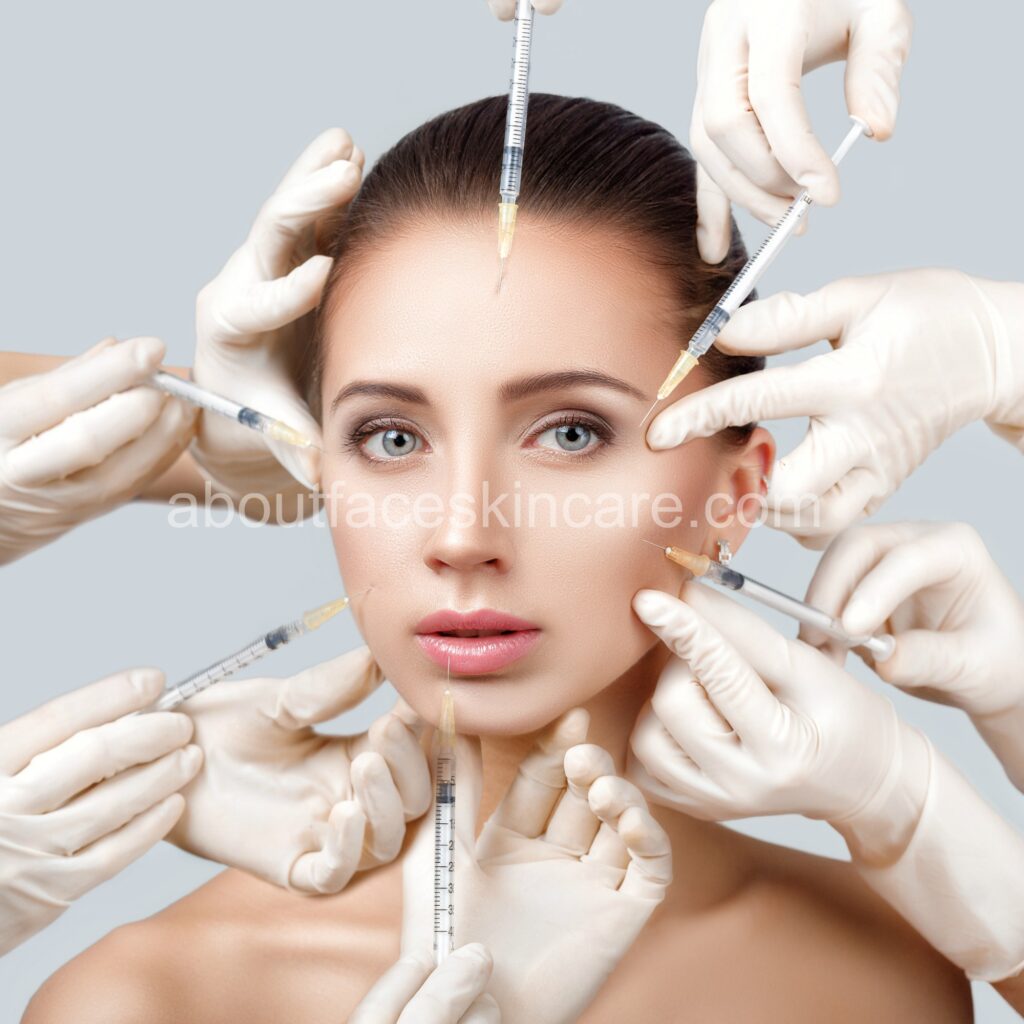
When it comes to getting rid of wrinkles, the first thing that comes to mind —and often go to—is Botox.
While Botox injections may be the Philadelphia gold standard for smoothing out skin and lessening signs of aging (Dysport does the same!) there are also a handful of out-of-the-box ways to use this miracle agent.
1. Reduce Sweaty Armpits
One of the original uses for Botox was to treat overactive sweat-glands. Medically known as hyperhidrosis, overly sweaty underarms is a condition that affects millions of people and can be hugely embarrassing for social-interactions. According to Philadelphia injector Nicole Ciasullo, this FDA-approved treatment is one of the most life-changing. “People are ecstatic to wear any kind of clothing they like, anytime of year, and never have to worry about embarassing sweat-stains.” Botox /Dysport injections in the underarms target the sweat-producing glands, preventing them from contracting and expressing sweat. Results usually last for around 6-months.
2. Alleviate Migraines
Years ago, doctors noticed that when they injected their patients with Botox for cosmetic purposes — there was also a decrease in the frequency / severity of headaches that migraine-sufferers experienced. Studies show that using Botox around the head and neck, in addition to between the temples, forehead, and hairline, can help relax the muscles that tense up during painful headaches and migraines. Nurse-injector Lauren Adamski says that while the exact mechanism of action isn’t known, it’s believed that Botox inhibits sensory pathways that modulate pain in migraines. “It may also reduce muscle contractions that act as a migraine trigger.”
3. Eliminate a Gummy Smile
If you show more gum than tooth when you smile, a few units of Botox/Dysport may be able to help. This off-label use can help your smile show more teeth, and less gums. “It works by temporarily freezing the muscles that lift the upper lip when smiling, this then prevents the upper-lip from retracting and exposing a significant amount of the gums when smiling,” explains Ciasullo. However, make sure to choose your provider with care — if the injections aren’t done just right or if too much product is used, your smile can become uneven, distorted, and even effect your speech.
4. Stop a Twitching Eye
Before Botox became known for its ability to smooth out wrinkles, one of it’s origianl uses was to correct eye-twitches. “It was originally developed and used to treat muscle-twitching around the eyes. This uncomfortable condition was greatly alleviated by the injection of neurotoxin into the hyperactive muscle,” says Ciasullo. “The effects typically last for three to six months.”
5. Alleviate Depression
“When it comes to using Botox to treat depression, it’s kind of similar to how it effects migraines,” explains Adamski. “Expression is tied to emotion as much as emotion is tied to expression. The action of making a facial-motion can create emotion, too,” she says. In studies, patients with depression who were treated with Botox either got better or went into remission, it is thought that the inability to frown helps prevent the patient from feeling upset or unhappy.
6. Control an Overactive Bladder
Best administered by a urologist, Botox can be injected into the wall of the bladder to help control bladder issues and halt the feeling to constantly “go”, which is connected to overstimulated bladder muscles. “To inject in this area, a small scope is passed through the urethra into the bladder and then a needle is passed through the scope. Several injections are made into the bladder,” says Ciasullo.
7. Relieve Jaw-Tightness From TMJ
Constant grinding of your teeth and clenching of your jaw can actually swell the muscles that live at the edge of the jaw and in the scalp. “Aside from feeling uncomfortable and tight — as these muscles grow and get stronger, they can cause the face to appear off balance,” says Adamski. “Injecting those muscles with Botox can soften the angles of the face and release any tension, too.”
8. Diminish Voice Disorders
When the vocal-cords spasm they can cause disorders with speech. Lasting anywhere from two to four months, Botox injections can help with these involuntary muscle spasms in the vocal cords. Best performed by providers that specialize in this area, “Botox is injected directly into the vocal-cord muscles in order to relax these muscles so that the involuntary movements are weakened or eliminated completely. As in other areas, treatment to this area is temporary and usually lasts 2-4 months.” says Ciasullo.
9. Control Oily Skin
According to some experts, micro-Botox treatments can be used to help decrease the production of sebum (the substance that makes skin look oily) on the face. “Subdermal injections of Botox can help to temporarily treat oily skin and reduce the size of the pores.” says Ciasullo.